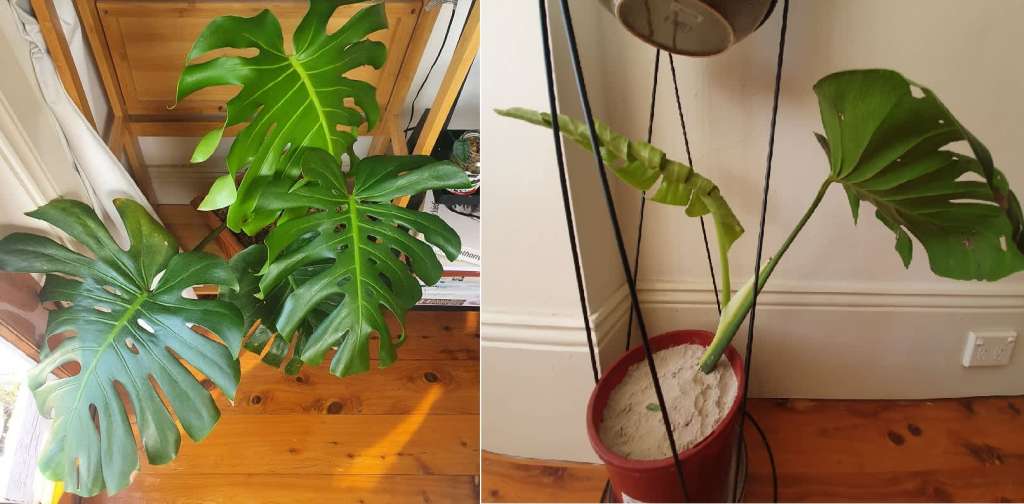It’s just a fact of life that if you’ve got spare shelving space, filling it with plants is a must. We’ve written extensively on the mental health benefits of house plants as well as the rabbit hole of rare plants and what happens when you get way, way too carried away with this hobby.
For many of us though, houseplants are a nice distraction and a way to bring nature into our homes – although they can be a source of frustration when they simply refuse to live, no matter how much you love them.
They are also fairly pricey. Even getting your hands on a few Monsteras and a couple of Fiddle Leaf Figs to liven up the place can set you back a fair bit. Some of those who have been bitten by the house plant bug have turned to less scrupulous means of getting their fix.
We’re talking proplifting. Here’s a quick and dirty guide on what it is and how to do it.
What is Proplifting?
Proplifitng. Noun. A spoonerism of propagating and shoplifting. It’s not criminal – at least, not when done properly – but it is a great way to grow yourself a forest without spending anything on the plants themselves.
Proplfiting in its classic form sees devotees collecting cuttings or leaf droppings from the floors of shops or stores and growing them out in their own homes.
Take for example Bunnings, who sell vast sums of houseplants to Aussies all up and down the country. Wandering the aisles of the foliage in there, you are likely to come across dropped leaves and more substantial plant matter that can, under the right circumstances, be grown into full, thriving plants.
Granted, it’s a bit of a legal and ethical grey area, but the community of proplifters online is huge and growing. They argue that their love for plants gives otherwise discarded plant babies a second shot at life.
Proplifting doesn’t have to take place in shops though. Wandering the streets, you are likely to come across plants that are ripe for a little hair cut in public spaces. Taking small trimmings of public plants is not exactly model-citizenry but, as long as you’re careful and respectful, it can be a great way to increase your collection.
When you eye something you just have to have that happens to belong to someone else, you should always ask before taking a cutting. Usually, people with abundant gardens are plant lovers and more than happy to share with you the fruits of their labour.
How to Proplift
Picking your plant matter is key. Succulents are notoriously easy to propagate and constantly dropping their plump, fleshy leaves all over the place. In fact, this is an advantageous means of reproduction that these plants have developed to spread themselves around. Find a couple of leaves on the floor that you’re certain no one will miss and you’ve got yourself the beginnings of a succulent paradise.
Equally, vining plants like Devil’s Ivy will propagate readily in the right conditions. Ensure you get a node – that’s the bumpy bit on a plant stalk where leaves grow out of – and you’re in business. This practice can even be replicated with larger plants like Fiddle Leafs and Monsteras if you’ve got the patience and skill to take care of them.
With succulents, what you want to do is get a dish and some light, airy soil or other growing material and lay the leaves down on top. As the leaf realises it’s no longer attached to the plant, it will begin to seek water from alternative sources. Spritzing these leaves and keeping them in bright – but not direct – sunlight will promote roots to start shooting out of the bottom of them, eventually taking hold in the soil and sprouting tiny baby succs.
With other plants, you can root these in water simply by placing them in a glass or jar and giving them a bit of a boost with some rooting hormone but it’s not always guaranteed. Roots prefer darker places to grow so putting them in a dark glass bottle often works better. Ideally, though, you can root plants simply by burying the cut end in some perlite and sphagnum moss for air and moisture. Cut plants are pretty susceptible to getting mould and other bacteria that will infect them so keeping them moist but not soaked is key.
So, now you know. Plants are pretty happy to grow anywhere and if anyone asks how you came by them, just say you’ve got a really green thumb.
Read more stories from The Latch and follow us on Facebook.

